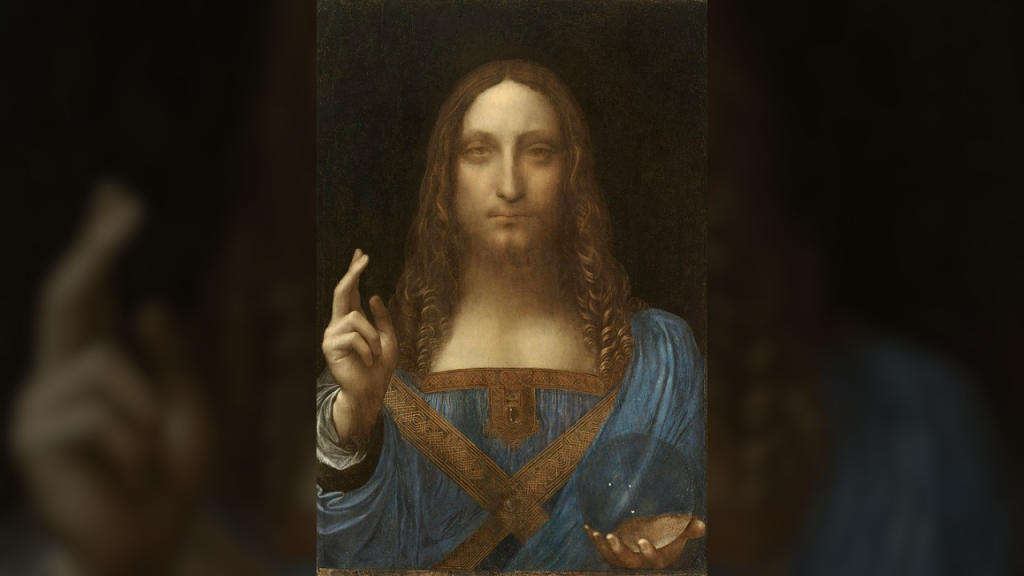In a surprising twist that’s sending ripples through the art world, the renowned painting “Salvator Mundi,” previously attributed to the legendary Leonardo da Vinci, is set to be transformed into a non-fungible token (NFT). The painting, which fetched a staggering $450.3 million at a Christie’s New York auction in 2017, will now enter the digital realm, capitalizing on the growing trend of NFTs and their potential to redefine the art market.
Controversial Origins and Record-Breaking Sale
The origins of “Salvator Mundi” have long been shrouded in controversy, with some art experts debating its true authorship by Leonardo da Vinci himself. Regardless of its creator, the painting’s allure lies in its depiction of Christ holding a crystal orb, a symbol of spiritual significance. The sale at Christie’s New York four years ago smashed records, solidifying its position as the most expensive painting ever sold.
The Shift to NFTs and Collaboration with ElmonX and Bridgeman Images
The ambitious undertaking of transforming “Salvator Mundi” into an NFT is spearheaded by ElmonX, a digital asset platform, in collaboration with Bridgeman Images, a prominent image licensing company specializing in fine art, cultural, and historical media. Bridgeman Images’ statement on the collaboration underscores the synergies between their expertise in licensing and ElmonX’s pioneering role in NFT art creation.

This partnership offers a distinctive opportunity to leverage Bridgeman Images’ vast collection in crafting high-quality NFTs. The move follows their prior successful collaborations with ElmonX, which saw the transformation of iconic masterpieces like Leonardo da Vinci’s “Mona Lisa,” Van Gogh’s “Starry Night,” Auguste Rodin’s “The Thinker,” and Claude Monet’s “Nymphéas” into NFTs.
NFT Pricing and Market Trends
The NFT versions of some of these masterpieces, such as the “Mona Lisa,” were offered in limited editions. For instance, 330 editions of the “Mona Lisa” NFT were sold at £150 ($191) each, with a bundle option including an NFT and a print version selling for £900 ($1,144). Notably, recent resales on NFT marketplaces like OpenSea have seen significant price fluctuations, with one bundled “Mona Lisa” NFT and print version fetching 3.7 ETH ($6,764) just last week. These price dynamics underscore the speculative nature of the NFT market and the potential for both traders and creators to experience gains and losses.
Navigating the Current NFT Landscape
This initiative to turn “Salvator Mundi” into an NFT arrives amidst a backdrop of shifting tides in the NFT market. Recent downturns in NFT sales have heightened tensions between traders and creators, leading to increased scrutiny of the long-term sustainability of the NFT phenomenon. As collectors and investors grapple with these uncertainties, collaborations like the one between ElmonX and Bridgeman Images exemplify attempts to harness the power of NFTs to rejuvenate interest in traditional art while exploring new digital frontiers.

Anticipated Announcement and Future Implications
The art world eagerly awaits the announcement of the terms of sale for the “Salvator Mundi” NFT on August 12th. This unveiling could potentially reshape perspectives on the value and accessibility of art, further blurring the lines between the physical and digital realms. As the NFT landscape continues to evolve, collaborations between digital platforms and established art institutions pave the way for a future where centuries-old masterpieces can find new life in the blockchain.
The Dreams of Leonardo Da Vinci: The Vulture Fantasy From a Memory of his Childhood

Contributor





